Last updated on July 3rd, 2025 at 05:12 pm
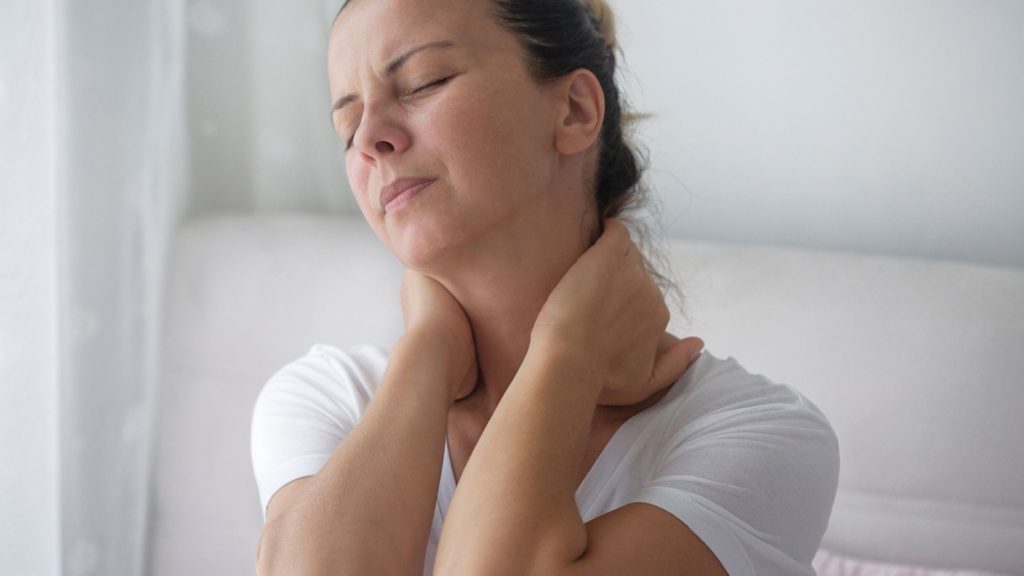
- Cervical spondylosis is a medical condition that affects the neck.
- It is caused by age-related wear and tear of the spinal disks and the bones in the neck.
- Symptoms include neck pain, stiffness, and a reduced range of motion.
- A combination of stretching and strengthening exercises can improve flexibility and reduce pain.
As we grow old, the most common cause of neck pain is cervical spondylosis. It can cause irritating pain and stiffness around the neck, making it difficult to concentrate on work or other activities.
In chronic cases, one may even complain of associated headaches. It can also lead to tingling or numbness in the arms, hands, and fingers.
However, there is no need to worry because by doing simple cervical spondylosis exercises every day, you can relieve the pain and stiffness and get rid of the problem.
In this article, we are going to learn the 6 most effective exercises to get rid of cervical spondylosis pain.
What Is Cervical Spondylosis? Causes, Symptoms & Risk Factors
Spondylosis cervical is a condition that affects the neck area of the spine. In the cervical spine, degenerative changes occur due to wear and tear of the vertebral bodies, intervertebral discs, and soft tissues.
As we age, the discs in our spine lose water and become less flexible, which can lead to the development of cervical spondylosis.
According to the research, cervical spondylosis symptoms start appearing at the age of 30 years. Cervical spondylosis usually presents in patients between the ages of 40 and 60 years, with a male-to-female ratio of 3:2.
However, the maximum prevalence was seen between 40-49 years of age1.
Degenerative changes around the neck can be attributed to occupational health hazards.
For example, a study found that degenerative changes were evident earlier in manual labourers who need to carry a heavy load on their head, and the load is transferred to the cervical spine1.
Another example is the wrong sitting posture for a desk job, which is why one should follow desktop ergonomic way to sit to prevent neck, back issues.
Trauma and an acute insult to the neck also contribute to the development of cervical spondylosis
When to See a Doctor: Warning Signs of Severe Cervical Spondylosis
- Chronic neck pain
- Headaches are often associated with neck pain, which is termed cervicogenic headache.
- Pain is worse when the person is in a certain position
- It can even interfere with sleep
- Radicular pain
- Diminished cervical range of motion.
- In severe cases, pain may radiate down the hand.
- Narrowing of the spinal canal can cause spinal cord compression and cervical spondylosis myelopathy. It presents as neck stiffness, clumsiness of hands, reduced fine motor skills, and abnormal walking patterns.
6 Best Cervical Spondylosis Exercises for Pain Relief (Step-by-Step)
Regular exercise has been seen to significantly reduce the pain and other symptoms. You have to follow a set of good exercises and perform regularly.
In my clinic, I advise my patients on a set of rules they should follow for a better result.
So before we proceed, let us have a look at the exercise rules that I also recommend you follow.
- You have to perform the exercises in the morning and the evening.
- Morning would be best suited, but I suggest you perform exercises twice daily in the morning and evening.
- The starting position of the exercises is the posture of the exercises; you can sit and perform, or you can stand, or you can take a yoga position to start the exercises
This was all about the pre-exercise rule. Now, without delay, let us jump to the actual exercises.
The purpose of the exercises is to increase the cervical range of motion by reducing stiffness. Maintaining the muscle tone and strength around the neck. So, let us get started.
Exercise 1: Neck Rotation to Improve Flexibility
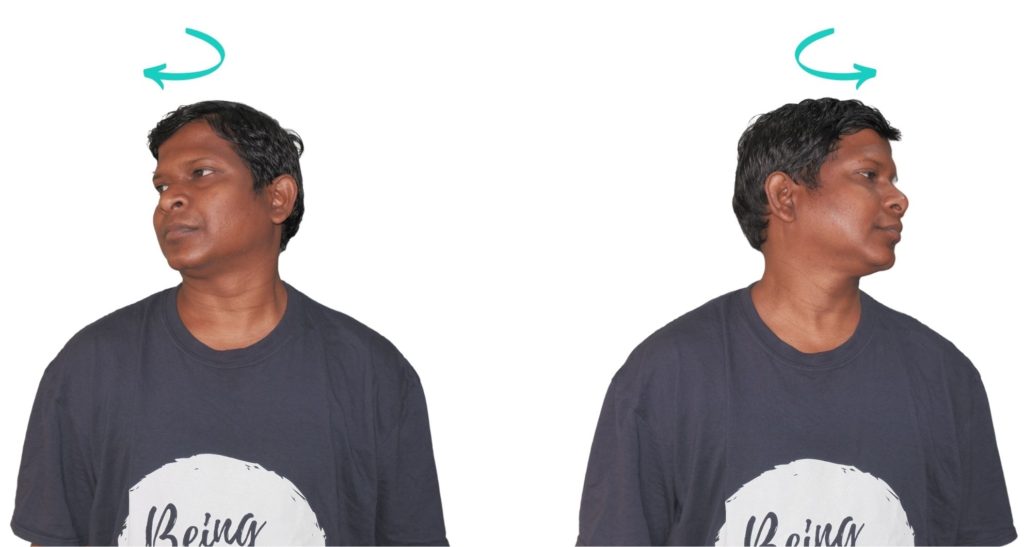
Active neck rotation is one of the most effective exercises to alleviate cervical spondylosis.
- To begin, find a seated position and sit with your neck erect and shoulders relaxed. Take a moment to ensure your body is in a natural and neutral position.
- Slowly rotate your neck towards the right side, keeping your chin parallel to the floor.
- Hold this position for a few seconds, taking care not to strain your neck or shoulders.
- Return to the starting position, and repeat the same movement on the left side.
- Remember to perform the rotations slowly and deliberately, without any sudden or jerky movements.
- Continue to rotate your neck from side to side, performing each movement ten times on each side.
As you progress with the exercise, you may find that you are able to increase the number of repetitions or hold the rotation for a longer period of time.
Active neck rotation is an excellent way to stretch and strengthen the neck muscles, improve range of motion, and reduce stiffness and pain associated with cervical spondylosis. Remember to perform the exercise in a slow, controlled manner.
Exercise 2: Neck extension
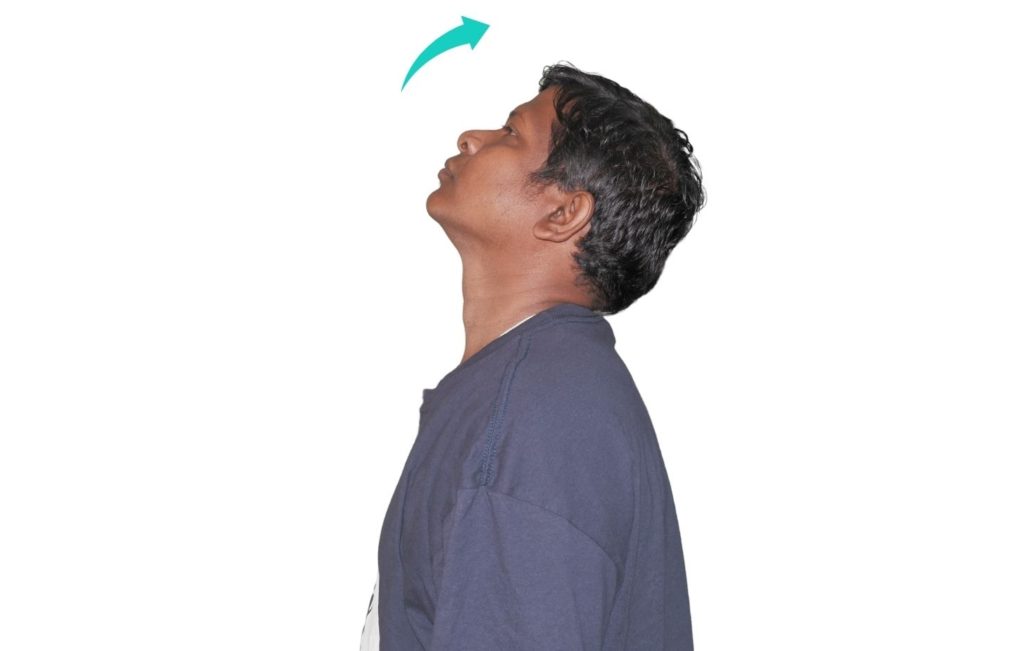
The neck extension exercise is simple and can help alleviate tension and stiffness in your neck muscles.
- To perform this exercise, start by sitting or standing straight with your shoulders relaxed and your arms at your sides.
- Next, slowly tilt your head back, keeping your chin parallel to the ground. As you do this, you should feel a gentle stretch in the front of your neck. Be sure to move slowly and avoid any sudden or jerky movements.
- Hold this position for a few seconds, then slowly return your head to its starting position.
- You can repeat this movement 10 to 15 times in a single exercise session.
Exercise 3: Side Bending to Release Muscle Tension
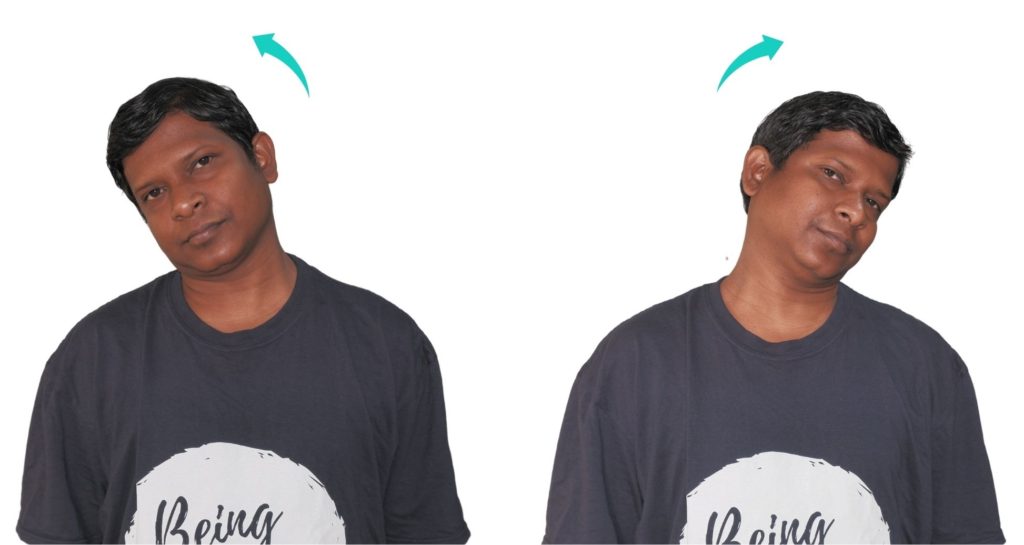
The exercise we will discuss is called the neck side bending, which is a part of the cervical spondylosis exercises.
Before we start, it is important to note that this exercise is assumed to be performed while sitting in a chair with your back straight and your neck erect and relaxed.
- To begin with, take a deep breath and slowly bend your neck to the left side. Try to bend it to the point where you feel a little stretch on the left side of your neck muscle.
- Hold this position for 5 seconds and then slowly return to the starting position.
- Repeat the same process on the right side by bending your head to the right.
- Repeat the exercise 10 times on one side and then switch to the other. You can gradually increase the repetitions as you get comfortable with the exercise.
By bending on either side, we are giving moderate stretching on the right and left side muscles, which can be very helpful in relieving the neck pain caused by cervical spondylosis.
It is important to note that you should not move your shoulders or tilt your head forward or backwards while performing this exercise.
Exercise 4: Chin tuck exercise for cervical spondylosis
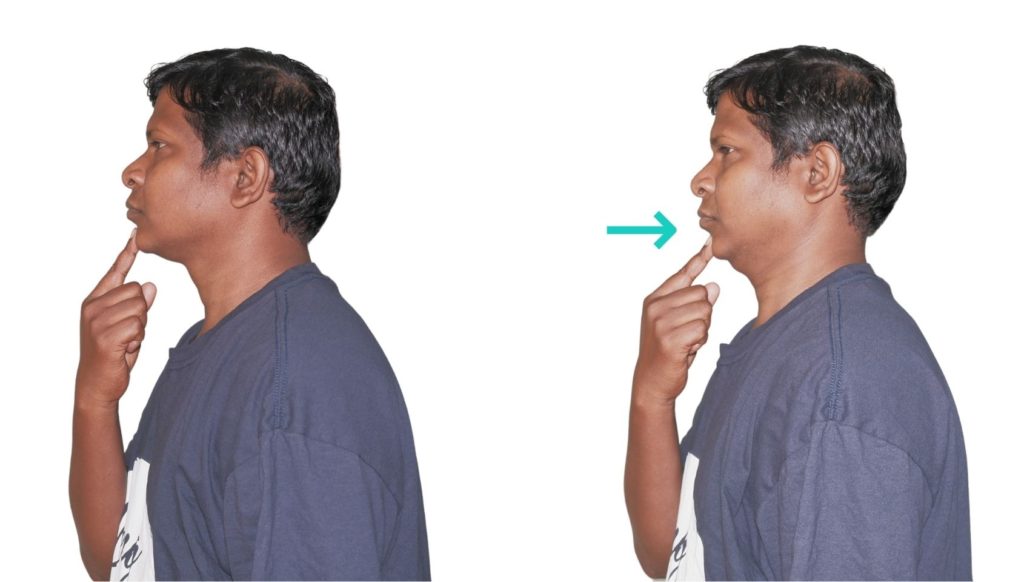
This is also a very effective exercise for neck spondylosis pain. Along with pain, this also helps maintain the correct neck posture. Cervical spondylosis pain is often a result of the wrong posture we adopt when working at a desk.
We must be aware of the correct way to sit at the desk and must follow it in our daily lives to avoid pain due to the wrong posture.
This wrong posture can result in a bad forward head posture. Chin tuck exercise is also very helpful in treating forward neck posture.
- To perform this exercise, start by sitting or standing upright with your shoulders relaxed and your eyes facing forward.
- Next, gently tilt your head downward, bringing your chin towards your chest.
- As you do this, imagine that you are pulling your head back and tucking it in towards your neck. You can use your fingers to guide your chin backwards as needed.
- Hold this position for 3 to 4 seconds, then slowly release and return to your starting position.
- Repeat this exercise 10 times in a single session, maintaining good posture.
Exercise 5: Stretching exercises for cervical spondylosis
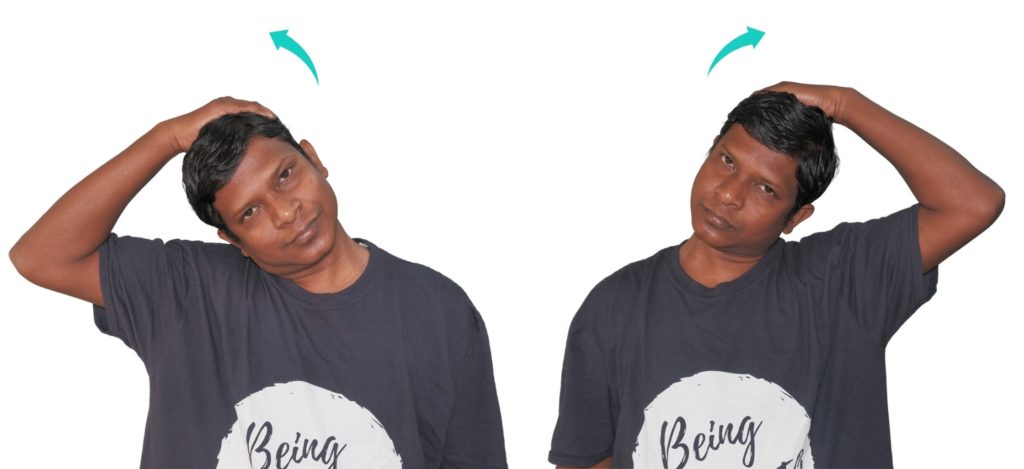
The next exercise involves stretching the muscles in your neck. You need to stretch the muscles on both the left and right sides of your neck. First, stretch the muscles on the left side of your neck and then the muscles on the right side.
Stretching the muscles on the right side of your neck can be easily achieved with the following exercise.
- Begin by sitting or standing straight with your shoulders relaxed and your head facing forward. Then, take your left hand and place it on the upper side of your head, with your fingers pointing towards the right side of your head.
- Next, slowly and gently pull your head towards the left side, using your left hand to guide the movement. You should feel a stretch in the muscles on the right side of your neck.
- Hold this position for at least one minute, breathing deeply and relaxing your shoulders.
- When you’re ready to release the stretch, slowly and gradually, use your left hand to guide your head back to its starting position.
- Repeat the same process on the left side of your neck, using your right hand to guide your head towards the right side.
- Remember to hold each stretch for a minimum of one minute.
Unlike other exercises, this stretch should only be performed once or twice in a session.
Regularly incorporating this exercise into your routine can help to relieve tension and tightness in the muscles of your neck, and may even help to reduce headaches and improve your overall posture.
Exercise 6: Isometric Strengthening for Neck Stability

The final exercise in our list of cervical spondylosis exercises is the isometric neck strengthening exercise. This is a strengthening exercise that aims to strengthen the muscles on all sides of the neck.
That is the muscles on the front, the right, the left, and the back of the neck.
- To strengthen the muscles on the front of your neck, start by placing your right hand over your forehead. You can also use your left hand to assist.
- Apply firm pressure with your hand on your forehead while pushing your head forward to resist neck motion. This exercise is called an isometric exercise, meaning you don’t have to move your neck; you must press it.
- Hold this position for 2 to 3 seconds and then release it.
- Repeat this exercise a minimum of 10 times in the front.
- Then, repeat the same process to strengthen the muscles on the left and right sides of your neck. This time, place your hand over the temple region just above your ears and apply pressure while resisting neck movement.
- Repeat this exercise 10 times on each side.
- As demonstrated in the figure, to strengthen the muscles on the back of your neck, clasp both hands on the back of your head. Apply pressure while resisting neck movement and hold for 2 to 3 seconds.
- Repeat this exercise 10 times in a session.
Pro Tip: Pair your exercises with a cervical support pillow to maintain proper spine alignment while sleeping. This memory foam pillow reduces morning stiffness.
- [Wake Up Refreshed – Ergonomic Design for Pain-free Sleep] ROPU memory foam pillow is scientifically contoured to cradle…
- [Two Heights – Custom Support for Every Sleeping Style] One size doesn’t fit all—that’s why our orthopedic pillow offers…
- [Premium Slow-rebound Memory Foam – Soft & Supportive] Not all memory foam is created equal! ROPU’s neck pillow features…

Prevention Tips: How to Avoid Cervical Spondylosis Worsening
Cervical spondylosis neck pain is often associated with upper back pain due to muscle knots (myofascial trigger points). Therefore, to get full relief, we must treat or take care of neck and upper back pain.
Exercises are very important; however, you may sometimes develop pain after the exercise session. Or, if you have acute pain, you should first reduce the acuteness and then proceed with these exercises. For this, I usually suggest following simple at-home steps.
If you have pain, apply a pain ointment over the painful area and let the body absorb it for 10 minutes. After a gap of ten minutes, apply a hot pack over the area, and you will feel almost instant relief.
For a hot pack, use an infrared lamp or a hot water bottle or apply warm water with a towel. Here are two nutraceutical products I would highly recommend to you. These are natural products prepared from extracts from plants and herbs and do not have any side effects.
JOINT FLEX OINTMENT
I want to recommend this highly effective pain balm to you. I often prescribe this to my patients at my clinic. Get this for yourself now.
Keep Reading: How to Use Shiatsu Massager for Neck and Back| A Review
FAQ
The author is a physiotherapist who has been practising for the last 17 years. He holds a Bachelor's in Physiotherapy (BPT) from SVNIRTAR (Swami Vivekananda National Institute of Rehabilitation and Research), one of the prestigious physiotherapy schools in India.
Whatever he learns dealing with his patient, he shares it with the world through blogs and e-books. He also owns a YouTube channel, "Sunit Physiotherapist" with over 8 lakh active subscribers. Here, he shares everything he gets to learn serving the patient.





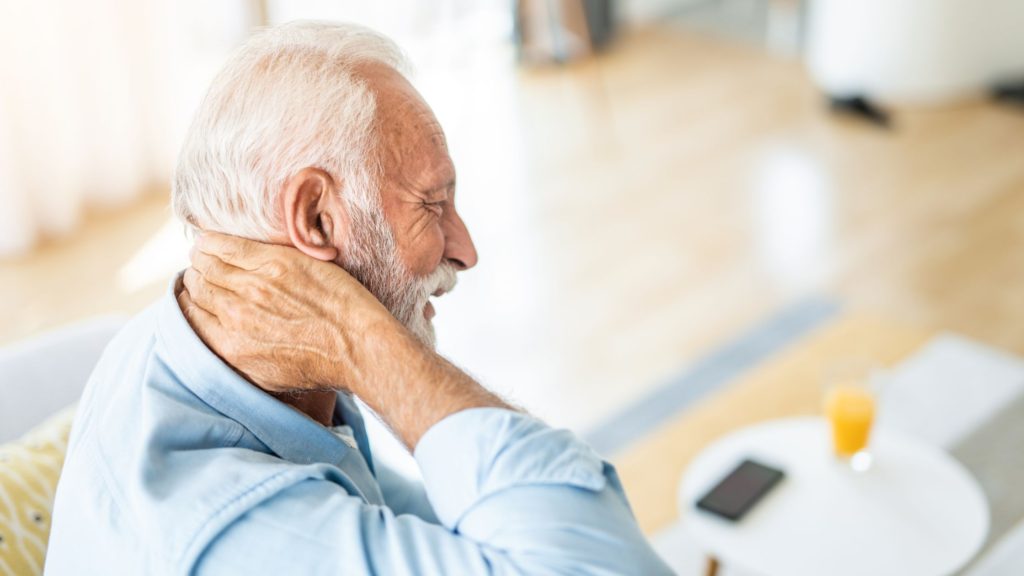
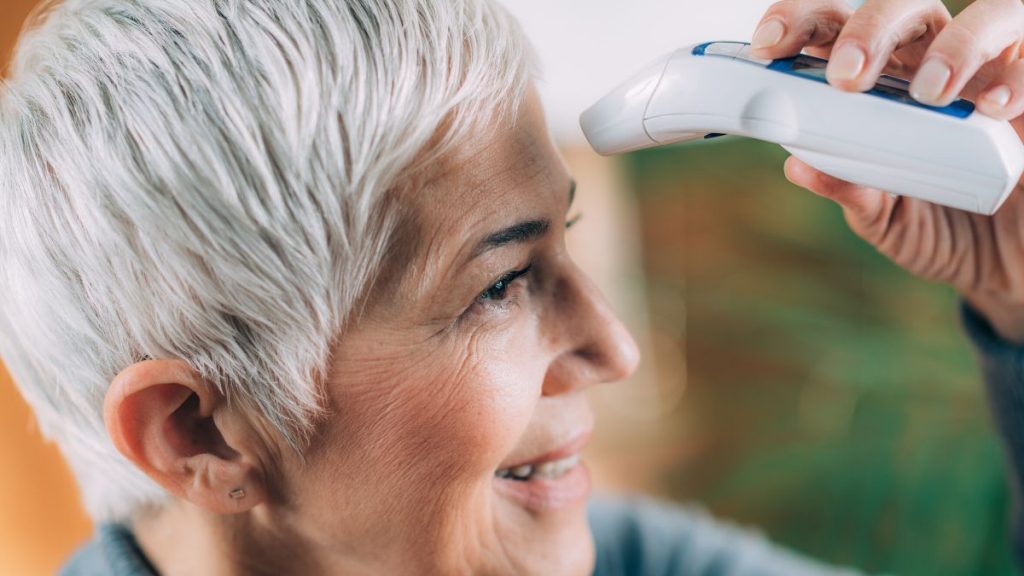
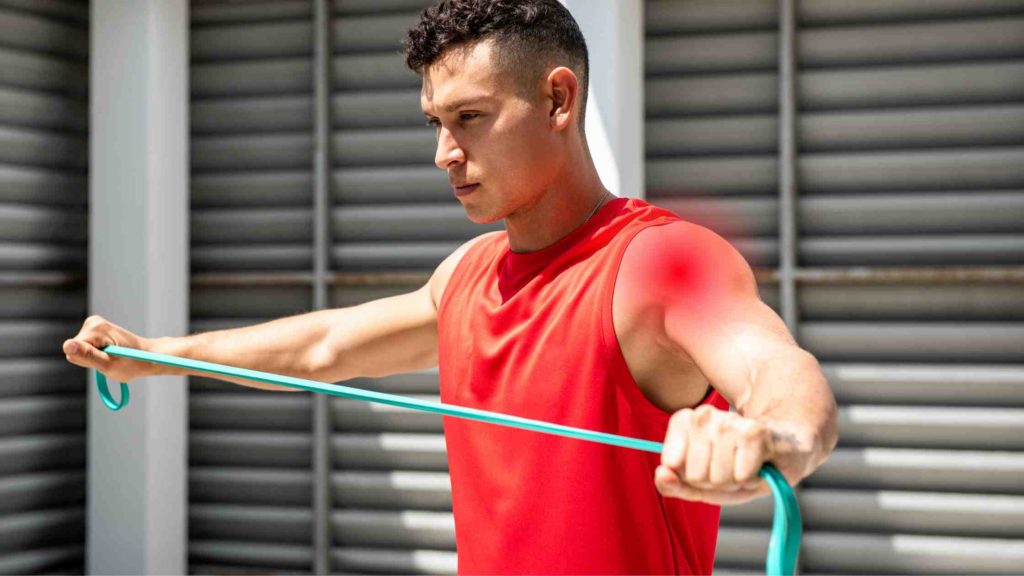

Pingback: 7 Easy Neck Exercises for Pinched nerve to Cure Cervical Radiculopathy Permanently
Pingback: 4 Causes of Neck Pain Left Side| Best Home Remedies - Physiosunit
Pingback: Cervical radiculopathy exercises, it's causes & treatment : Physiosunit